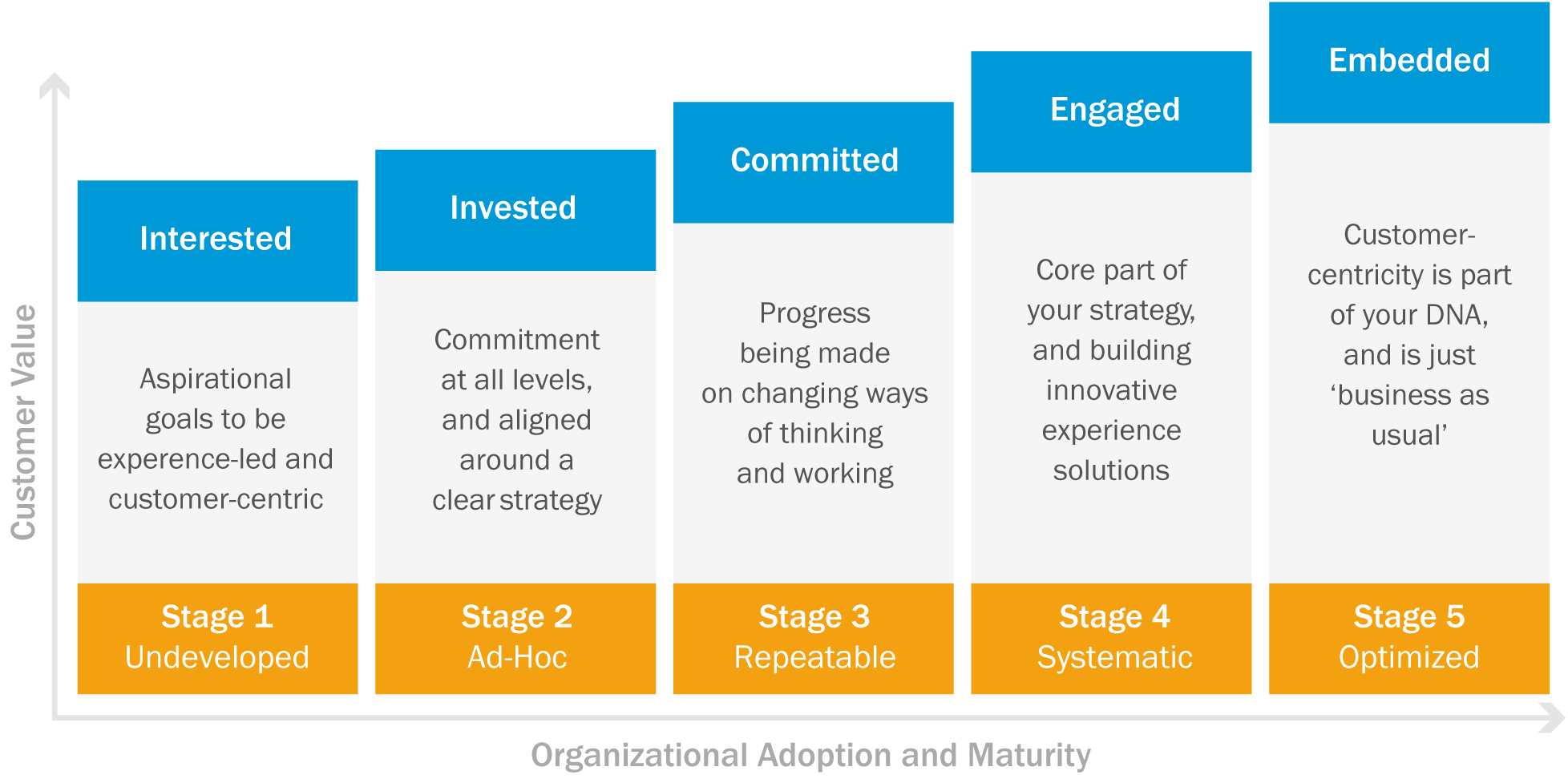Stage 1: Interested.
You suspect customer experience maybe important but have no formal approach to make it happen. Your aspirational goal is to be experience-centric, but your capabilities are undeveloped.
Stage 2: Invested.
You know it’s important and have initiatedsome formalized programs like customer listening, but they aren’t integrated or systematized, and they’re deployed in an irregular manner. You’ve begun to align on a strategy and plan, though your capabilities are ad hoc.
Stage 3: Committed.
You’ve begun to implement actionacross your organization in key areas, but they still aren’t systematicor scalable across the organization. You’re startingto do well at solving individual and some systemic customerproblems, are fixing old experiences, and designing new ones;your capabilities are repeatable.
Stage 4: Engaged.
Customer experience is a core part of your business strategy, and while practices are performed regularly you still don’t have continuous improvement systems. You’re creating some innovative experiences and are building a customer-centric culture; your capabilities are systematic.
Resource Tag
Stage 5: Embedded.
It’s ingrained in your business, and it’s part of your organization's DNA. You’ve put systems in place that enable you to take the customer perspective into account regularly and systematically and deliver great experiences every day at every touchpoint. You can track value and financial results (and do so regularly for you and your customers), and your capabilities are optimized.
Learn More


